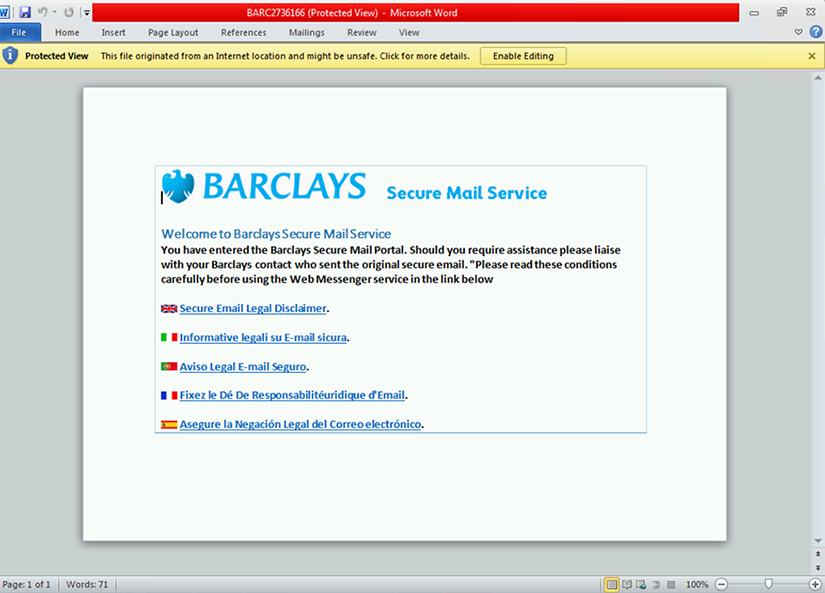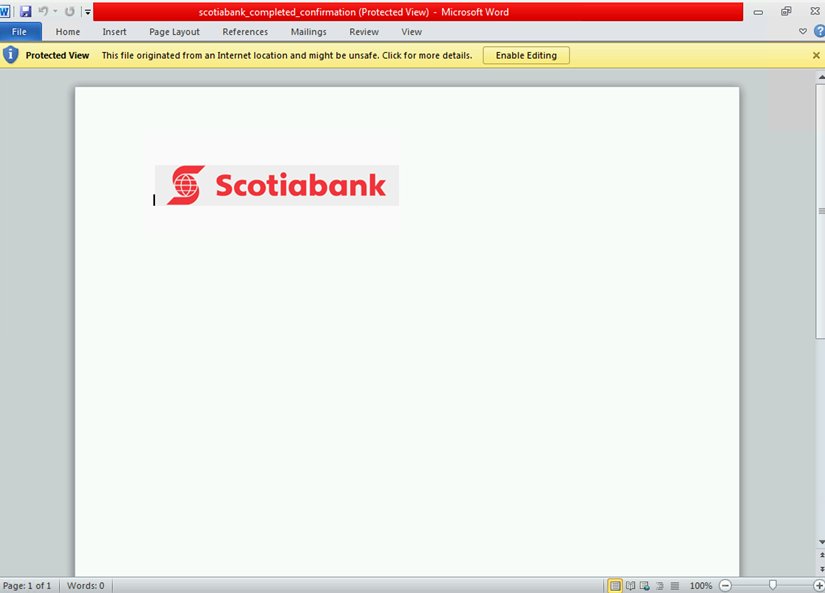As researchers like @dvk01uk noted, multiple spam campaigns are delivering malicious document attachments that exploit several vulnerabilities to install banking trojan #Trickbot. The spam emails spoof several banks, including Barclays and Scotiabank. 



The attachment is a malicious .docx file that exploits CVE-2017-0199 to download a malicious .rtf, which in turn exploits CVE-2017-8570 to drop a malicious PowerShell, and CVE-2017-11882 to run the said PowerShell, which downloads #Trickbot. 



Protected view can prevent automatic execution of malicious documents. Office365 ATP blocks the malicious emails. Windows Defender AV blocks malicious documents and payload. Attack surface reduction in Windows Defender Exploit Guard can also help protect. blogs.technet.microsoft.com/secguide/2018/…
• • •
Missing some Tweet in this thread? You can try to
force a refresh








